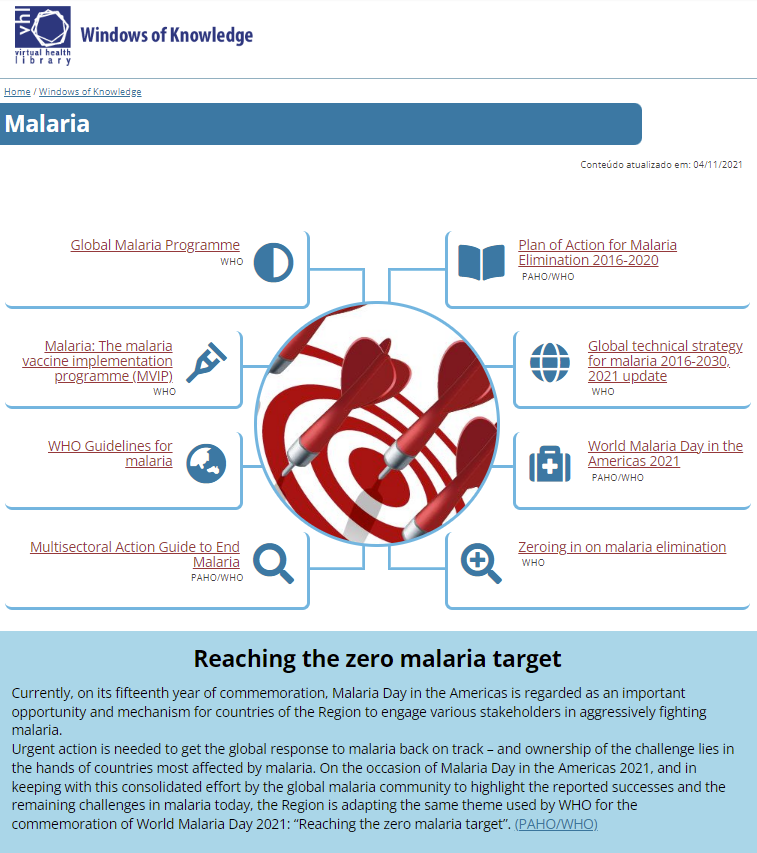April 25th marks World Malaria Day, and this year the Pan American Health Organization/World Health Organization (PAHO/WHO) calls on countries in the region to intensify efforts to combat malaria through evidence-based prevention, diagnosis, and treatment interventions adapted to local contexts. Urgent action is needed to resume the global response to malaria, and responsibility for the challenge lies with the countries most affected by the disease [1].
This year’s theme is “Harnessing innovation to reduce the burden of malaria and save lives” and aims to highlight the importance of investment in new tools as well as more effective use of available methods to prevent, diagnose and treat malaria, especially in the hardest hit countries. Between 2015 and 2019 there has been a 79% increase in cases in the region. In 2020, the 18 malaria-endemic countries in the Americas reported more than 600,000 cases of malaria, a 26% reduction from the previous year.
In the Americas, Paraguay was certified malaria-free in 2018, followed by Argentina in 2019 and El Salvador in 2021, which reduced the number of endemic countries from 21 in 2015 to 18 today. Belize is on track to receive certification this year. Despite this progress, spikes in cases associated with migration, particularly in the agriculture, fishing, and mining sectors, combined with insufficient health facilities in areas with hard-to-reach and mobile populations, have threatened progress, putting elimination efforts in some countries at risk.
Malaria is an acute febrile illness caused by the parasite of the genus Plasmodium, which is transmitted by the bite of an infected female Anopheles mosquito. Symptoms, including fever, headache, and chills, usually appear between 10 and 15 days after the bite and can be mild and difficult to recognize as malaria. If left untreated, malaria can progress to severe illness and death. Effective vector control, including the use of insecticide-treated nets and indoor residual spraying, are crucial to preventing transmission of the disease. [2]
While increased access to antimalarial drugs and improvements in clinical management of severe cases have led to a reduction in malaria-related deaths in the region to 108 deaths in 2020 – there were 340 in 2018 – it must be done to interrupt transmission through increased investment in interventions at the local level.
By 2020, more than two-thirds of all malaria-related deaths worldwide occurred among children under the age of five living in the African region. A report by the WHO Strategic Advisory Group on Malaria Eradication calls for renewed research and development to boost eradication efforts. The latest global report shows that $851 million is needed in the period 2021 to 2030 for research and development on malaria vaccines, antimalarial drugs, new vector control technologies, and innovations to combat mosquito resistance to insecticides.
 To provide scientific and technical information on the disease, including selection of documents in the information sources of the Virtual Health Library, as well as official reports from international organizations and ministries of health from Brazil and countries of the Region, BIREME has developed the Window of Knowledge on Malaria in the Americas.
To provide scientific and technical information on the disease, including selection of documents in the information sources of the Virtual Health Library, as well as official reports from international organizations and ministries of health from Brazil and countries of the Region, BIREME has developed the Window of Knowledge on Malaria in the Americas.
References
[1] Virtual Health Library. Window of Knowledge on Malaria in the Americas. Available at: https://bvsalud.org/vitrinas/en/post_vitrines/malaria/
[2] Pan American Health Organization. World Malaria Day: more must be done to improve malaria response at local level. 2022. Available at: https://www.paho.org/en/news/25-4-2022-world-malaria-day-more-must-be-done-improve-malaria-response-local-level